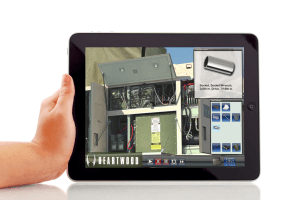 What if any employee or student could access the right piece of learning content just when they needed it? For example, training content about machinery, vehicles, or any other equipment? And what if that content was delivered in an interactive, engaging, and truly immersive form? You know, like a 3D Interactive App accessible via a mobile phone or tablet?
What if any employee or student could access the right piece of learning content just when they needed it? For example, training content about machinery, vehicles, or any other equipment? And what if that content was delivered in an interactive, engaging, and truly immersive form? You know, like a 3D Interactive App accessible via a mobile phone or tablet?
Sounds a bit of a far reach, right?
Industries are challenged with equipment-based simulator training
Well, it turns out the future is now… but very few know it. At least that’s what we’re finding from our travels across the country talking with Operations & Maintenance (O&M) training teams who work at large enterprise organizations. What we’ve instead discovered is a common set of challenges, especially across Aerospace, Defense, and Energy industries.
Turns out that in an effort to deliver the best virtual training simulation to their students, these companies have deployed desktop simulator training devices on-site. These simulators replicate the machinery (or aircraft, vehicle) in form and function; and are a combination of cutting edge hardware and software integrated together.
As a matter of fact, they can simulate almost any kind of real-world scenario, and someone using a simulator can do pretty much anything that they can do on the actual equipment. Pretty impressive, right?
Well, here’s the challenge with that…
Simulators that connect to real world equipment and hardware are very useful at some things; however, they’re limited in reach, often complicated to train on, and aren’t portable so that students can learn at their own pace, anywhere, anytime, and on any device. On top of that – high acquisition costs.
Or said another way, since these simulators are designed to replicate any ‘What-if’ scenario, they need a vast amount of computing power and physical accessories to make them run. So, no surprise, this makes them non-portable. That means training organizations have to align student schedules, incur travel costs and train them in batches.
Moreover, guidelines for most operations & maintenance discourage free-play activity anyways. Steps need to be adhered to in a precise procedural manner, may it be routine maintenance or troubleshooting.
What’s the bottom line? Simulator-based training is an expensive and non-scalable proposition for any company no matter how large.
“Standard simulators are a great way to train. But they are expensive. The costs of traditional training are not just the cost of hardware. It involves the cost of travel, the challenges of scheduling, the need for students to leave their families, and others. By making the training available any time – any place and making it fun with video game technology, you make training available and attractive to the learners while at the same time reducing a multitude of costs”
Warren Katz, co-founder of MäK Technologies.
Not to mention that each student really only has one opportunity to learn and retain the knowledge while they’re on-site. Once they leave the facility, the opportunity to re-train and refresh their knowledge is quite limited.
Converging technologies hold the key to the future of training
There must be a better way. And there is.
Our vision at Heartwood is that the next phase of training innovation will be directed towards being ‘Portable, Scalable, and in digestible Modular chunks’. While the ‘what-if’ full capability simulators will always have their place, the time to deploy modular 3D interactive lessons, anytime, anywhere, is now. For example, we deploy 3D Interactive Apps onto tablets as a training simulation alternative for our Operations & Maintenance (O&M) enterprise customers.
Do this and you’ll finally be unchaining your student employees so they can practice training simulations as often as they’d like, and at their own pace… and learn in a way that’s unique to each of them.
Simply put, “rather than deploy a 100% all inclusive training to 10% of the audience, lets deliver a 70-80% inclusive modular content to 100% of them, all the time”.
View this video featuring a Portable, Scalable, and Modular Training Application in action:
And while we’ll be the first to admit that change isn’t always easy, that doesn’t mean it needs to be hard. Just consider a favorite quote of mine: “A ship is safe in harbor, but that is not what it’s built for.”
Update: Check out this conference validating ‘Digital Media Convergence in Flight Simulation & Training‘
Want to learn more about how 3D Interactive Training can help you scale your 3D simulator-based training? Contact us for a consultation with one of our 3D Interactive Training experts.


